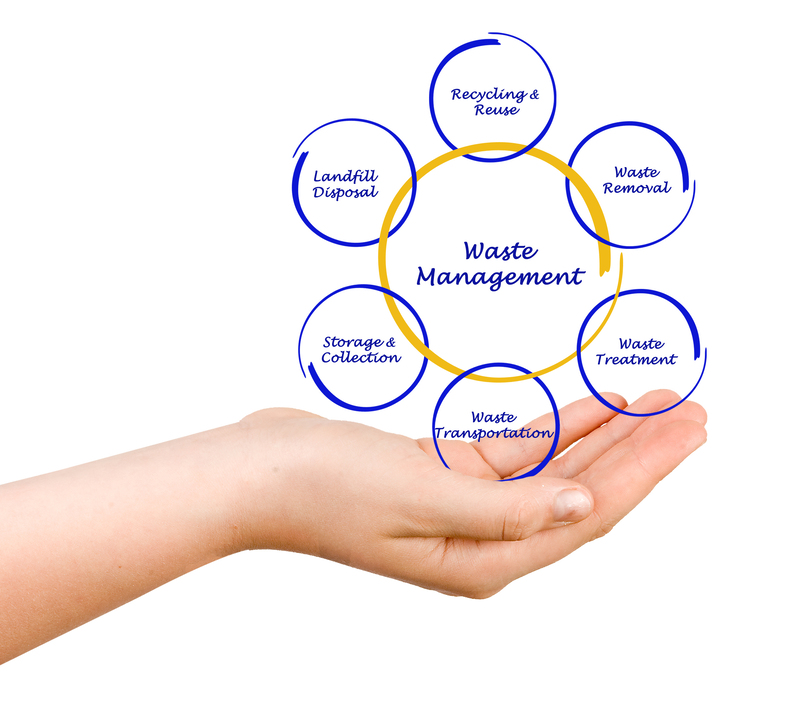A Guide to Disposing of Masks, Gloves, and Other PPE Responsibly
The surge in the use of personal protective equipment (PPE)--such as masks, gloves, face shields, and gowns--has been pivotal in battling global health crises and maintaining public safety. However, improper disposal of these items is contributing to environmental challenges and posing health risks. This comprehensive guide explores how to dispose of masks, gloves, and other PPE responsibly, minimizing environmental impact and ensuring safety for all.
Why Responsible Disposal of PPE Matters
The widespread adoption of PPE, especially during the COVID-19 pandemic and beyond, has led to a dramatic increase in single-use plastics entering our waste stream. Discarded masks, gloves, and protective gear are turning up on streets, beaches, and in waterways. Not only do they spoil natural environments, but they also jeopardize wildlife and can even become sources of disease transmission.
- Environmental Impact: Masks and gloves are typically made from synthetic fibers like polypropylene. These materials do not biodegrade easily and contribute to microplastic pollution.
- Public Health Risks: Improperly discarded PPE can be contaminated with viruses or bacteria, putting sanitation workers and the public at risk.
- Waste Management Challenges: PPE is not usually recyclable through household recycling bins, risking contamination of the recycling stream.

Different Types of PPE and Their Materials
Understanding the composition of PPE is essential for responsible disposal. Here are the most common types:
Face Masks
- Surgical Masks: Made mostly from polypropylene, a type of plastic.
- Cloth Masks: Comprised of cotton, polyester, or blends. These are reusable if washed properly.
- N95 Respirators: Made of advanced synthetic fibers designed to filter fine particles.
Gloves
- Latex Gloves: Made from natural rubber, biodegradable under certain conditions.
- Nitrile & Vinyl Gloves: Synthetic, non-biodegradable.
Other PPE
- Face Shields: Majority constructed from plastics like PET or polycarbonate.
- Gowns and Shoe Covers: Frequently made from synthetic, non-woven materials.
Step-by-Step Guide to Disposing of PPE Responsibly
1. Always Treat Used PPE As Potentially Contaminated
Regardless of visible soiling, assume used PPE is contaminated. Handle with care and avoid touching your face or surfaces afterward. Wash your hands thoroughly after disposal.
2. Know What Belongs in Household Waste
Disposable masks and gloves should be placed in the general waste (black/grey bin) instead of recycling bins. They cannot be recycled through standard curbside collection because:
- They may be contaminated.
- They tangle machinery at recycling facilities.
- Most are made from mixed materials, which are difficult to process.
Avoid littering masks or gloves on the ground or in public spaces.
3. Take Extra Precautions for Contaminated PPE
If the PPE was used by a sick person or in a clinical environment, take additional steps:
- Double-bag the used PPE--place it in a plastic bag, seal it, and put that bag inside another, sealed bag.
- Wait at least 72 hours before placing it in the outside bin. This reduces the risk of infection for waste collectors.
- Do not place potentially contaminated PPE with recyclables or compostables.
4. Consider Reusable Alternatives
While not all settings allow for reuse (such as certain healthcare contexts), whenever possible, choose washable masks and gloves. These can be cleaned and sterilized for repeated use, significantly reducing waste.
Common Mistakes When Disposing of PPE
- Flushing masks and gloves down toilets: This leads to clogged pipes and pollutes water bodies.
- Throwing PPE into recycling bins: This contaminates recyclable materials and disrupts the recycling process.
- Leaving PPE in public spaces: This not only damages the environment but also endangers public health.
Eco-Friendly Options for Used PPE
Mask and Glove Recycling Initiatives
Some specialist companies and NGOs have launched programs to recycle PPE. For example, projects like TerraCycle offer collection and recycling programs for masks and gloves from businesses and, in some locations, individuals. These programs process PPE to divert it from landfill and incineration, turning plastic waste into usable products.
*Check availability in your local area, as these schemes are not yet widespread.*
Repurposing Used PPE
Creative projects in some communities have turned used PPE into art, construction materials, or even fuel. However, these are not common or widely approved methods and require professional handling due to potential contamination.
Special Tips for Handling PPE Disposal at Workplaces and Medical Facilities
- Follow Protocols: Most facilities have clear biohazard and clinical waste disposal guidelines. Adhere to them strictly.
- Clear Labeling: Use clearly labeled bins for PPE.
- Staff Training: All employees should be trained on proper PPE use and disposal.
- Regular Waste Collection: Ensure waste bins are emptied frequently to minimize risks.
How to Encourage Responsible PPE Disposal in Your Community
- Increase Awareness: Share accurate information about proper disposal of masks and gloves through social media, posters, or community events.
- Install Dedicated Bins: Advocate for the placement of PPE disposal bins in busy areas such as public transport stations, parks, and shopping centers.
- Support Clean-Up Initiatives: Organize or participate in clean-ups to reduce litter and educate participants about proper PPE waste management.
- Lobby for Local Schemes: Petition local councils or businesses to join specialist Mask and Glove Recycling Programs.
What Happens to Disposed PPE?
Most PPE disposed in household waste ends up in landfills or is incinerated. Landfilling leads to long-term plastic pollution, while incineration--although it reduces volume--can still emit greenhouse gases and toxic substances. A small proportion is currently recycled through specialized schemes that break down plastics for reuse in manufacturing.
Legislation and PPE Disposal Guidelines Around the World
- United States: The Centers for Disease Control and Prevention (CDC) advises placing PPE in lined trash bins and avoiding recycling.
- UK: Government guidelines recommend double-bagging PPE waste from suspected COVID-19 cases and storing it for 72 hours before disposal.
- EU: The European Environment Agency emphasizes using separate bins for PPE in public spaces and researching biodegradable alternatives for future use.
Check with your local authorities for the most up-to-date guidance, as the advice on responsible PPE disposal may vary by region or city.
Looking Ahead: Innovations in Sustainable PPE
The global demand for greener PPE is accelerating innovation. Some companies are developing biodegradable face masks, gloves from compostable materials, and reusable PPE based on advanced textiles. As these options become commercially available, they promise to significantly reduce our environmental footprint.
Always look for certified, safe, and effective sustainable PPE alternatives before making the switch, especially if used in a professional healthcare setting.
Key Takeaways for PPE Waste Disposal
- Never throw masks, gloves, or other PPE into recycling or compost bins unless specifically instructed by a recycling program.
- Always bag PPE waste, and double-bag if contaminated or used in a medical context.
- Wash hands thoroughly after any contact with used PPE.
- Choose reusable PPE where practical and safe.
- Encourage your community and workplaces to adopt PPE disposal best practices.

Frequently Asked Questions about Disposing of PPE Responsibly
Can used masks and gloves be recycled?
No, most household recycling programs do not accept used PPE due to contamination and mixed materials. However, check for specialist programs in your area.
Are biodegradable masks and gloves available?
Yes, though not yet widely used, some manufacturers now offer biodegradable PPE. Be sure to follow disposal instructions specific to these products.
What should I do with used PPE if I am sick?
Double-bag and isolate the waste for at least 72 hours before placing it in the general waste bin.
Can I burn used PPE at home?
No, burning plastics at home is hazardous and illegal in many areas. Use official waste disposal methods.
What's the risk to wildlife from discarded PPE?
High--animals can become entangled or ingest plastics, causing injury or death. Always dispose of PPE in sealed bins.
Conclusion: Our Responsibility for a Cleaner Future
Properly managing the disposal of masks, gloves, and other personal protective equipment is essential for protecting the environment, public health, and frontline workers. By following guidance for responsible PPE disposal--from household waste management to supporting innovative recycling programs--you can help reduce pollution and keep your community safe. Make responsible choices, spread the word, and let's work together for a cleaner, healthier future.
Dispose of PPE responsibly--our planet and its people depend on it.
